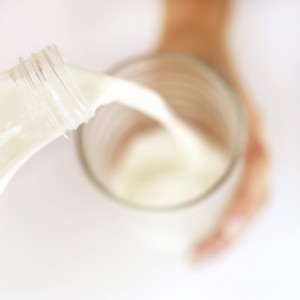Ask Shelley Case: Does Celiac Disease & Lactose Intolerance Go Hand-in-Hand?
Monday, March 8th, 2010Q. I have just been diagnosed with celiac disease. In addition to avoiding gluten do I need to avoid dairy products too? I hear that celiac disease and lactose intolerance can sometimes go hand-in-hand.
diagnosed with celiac disease. In addition to avoiding gluten do I need to avoid dairy products too? I hear that celiac disease and lactose intolerance can sometimes go hand-in-hand.
Celiac disease is an autoimmune disorder triggered by the consumption of gluten found in the grains wheat, rye and barley. The small intestinal villi (tiny finger-like projections) become inflamed and flattened (known as villous atrophy) due to the reaction to gluten. Malabsorption of various nutrients such as iron, folic acid, calcium and vitamin D can result. Fortunately, removing gluten from the diet will allow the villi to regenerate fairly quickly- often weeks to a few months. In some people with long-standing, undiagnosed celiac disease or in older individuals, it may take months to several years until the villi are completely healed. The most important factor is to follow a strict gluten-free diet for life.
The tips of the villi also contain enzymes such as lactase which is responsible for the digestion of lactose- a natural sugar found in milk and milk products. In some individuals with newly diagnosed celiac disease, especially those with major villous atrophy, the level of lactase is significantly reduced. This temporary lactose intolerance causes undigested lactose to pass through the intestinal tract, drawing fluid with it. It is then fermented by bacteria in the large intestine producing short-chain fatty acids and gases. Symptoms of lactose intolerance may include abdominal cramping, bloating, gas, nausea, headache and diarrhea. These symptoms can occur 15-30 minutes or as long as several hours after consuming foods with lactose.
The good news is that this temporary lactose intolerance often improves on the gluten-free diet alone. However, some people may also need to restrict or reduce lactose until the villi are completely healed and the lactase enzyme levels are restored to normal. This may take weeks to months depending on individual response. It should be noted that most individuals with lactose intolerance can digest small amounts of lactose.
Here are some options for those with lactose intolerance:
Lactose-reduced milk contains added lactase enzymes and about 99% of the naturally occurring lactose has been converted to simple, easily digested sugars. Some brands such as Lactaid and Dairy-Ease are available in refrigerated forms and Lacteeze is in shelf-stable and refrigerated forms. Lactose-reduced milk is slightly sweeter than regular milk but it has the same nutritional value and can be used in cooking and baking as well.
Lactase supplements can be taken just before meals or snacks that contain lactose. Lactaid makes caplets that can be swallowed or chewable tablets. Lacteeze brand has ultra-strength tablets.
Lactase enzyme drops can be added to liquid dairy products. You need to pre-treat the milk at least 24 hours in advance to ensure the lactase breaks down the lactose. Lactaid and Lacteeze make these drops that are available in drug stores.
Non-dairy beverages made from nuts, potatoes, rice or soy do not contain any lactose. Look for brands that are gluten-free (do not contain any barley malt flavoring) and are enriched with calcium, vitamin D and other nutrients.
Yogurt is often tolerated by those with lactose intolerance. Although yogurt contains lactose, the lactase enzymes in the active cultures digest this lactose. Choose brands that contain “active” or “live” cultures.
Cheese especially aged, natural cheese such as Cheddar, Swiss, Parmesan and Mozzarella are low in lactose. In these cheeses most of the lactose is removed with the whey and the small amount remaining is broken down during the aging process, therefore, most aged cheese are well tolerated. However, processed cheese food and processed cheese spreads often contain added modified milk solids, therefore their lactose content may be higher than plain processed cheese. Light cheese products also contain modified milk solids that replace milk fat. They tend to be high in lactose.
Milk taken in small amounts (1/4-1/2 cup) at a time may be tolerated. Avoid drinking large amounts at once. Consume milk with meals or snacks but avoid drinking on an empty stomach. The higher the fat content in the milk, the slower it is digested and more easily tolerated. Whole milk may be better tolerated than low-fat or non-fat milk.
The above information was excerpted from Gluten-Free Diet: A Comprehensive Resource Guide by Shelley Case, RD. See www.glutenfreediet.ca